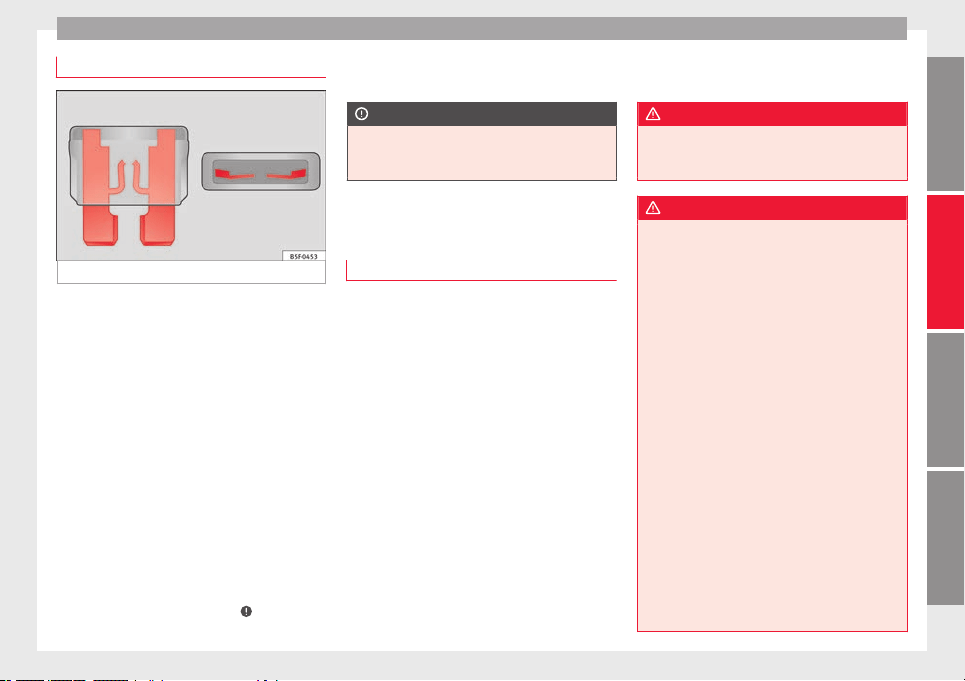Loading ...
Loading ...
Loading ...

Fuses and bulbs
Replacing a blown fuse
Fig. 145 Image of a blown fuse
Preparation
●
Switch off the ignition, lights and all elec-
trical equipment.
●
Open the corresponding fuse box
››› page 190
.
Identif
y
ing a blown fuse
A fuse is blown if its metal strip is ruptured
››› Fig. 145.
Point a lamp at the fuse. This will make it
easier to see if the fuse is blown.
To replace a fuse
●
Remove the fuse.
●
Replace the blown fuse by one with an
identical amperage rating (same colour and
markings) and identical size ›››
.
●
Replace the cover again or close the fuse
box lid.
CAUTION
If you replace a fuse with higher-rating fuse,
you could cause damage to another part of
the electrical system.
Changing bulbs
Introduction
Changing bulbs requires a certain amount of
manual skill. If you are unsure, SEAT recom-
mends that you consult a technical service or
request assistance from a specialist. In gen-
eral a specialist is needed if, in addition to
the bulbs, other vehicle components require
removal.
You should store spare light bulbs in the ve-
hicle for safety-relevant lights. Spare bulbs
may be obtained from the technical services.
In some countries, it is a legal requirement to
carry spare bulbs in the vehicle.
Driving with faults and blown bulbs on the
vehicle exterior lighting is against the law.
Additional bulb specifications
The specifications of some headlamp bulbs
and bulbs for the tail lamps fitted at the fac-
tory may be different to those of conventional
bulbs. Bulb information is displayed on the
bulb socket or on the bulb itself.
WARNING
If the road is not well-lit and the vehicle is
not clearly visible to other drivers, there is a
risk of accident.
WARNING
Failure to replace bulbs correctly may cause
serious accidents.
●
Before carrying out any work in the engine
compartment please read and observe the
warnings ››› page 143. In any vehicle, the en-
gine comp
artment is a hazardous area and
could cause severe injury.
●
The bulbs H4, HB4 and H7 are pressurised
and might explode on changing them.
●
Only replace the bulbs concerned when
they have cooled.
●
Never replace bulbs alone if you are not fa-
miliar with the operations necessary. If you
are not sure about procedures then visit a
specialised workshop to carry out the neces-
sary work.
●
Never touch the bulb glass directly. Finger-
prints will be evaporated by the heat of the
operating bulb thus “fogging” up the reflec-
tor.
●
The headlamp frameworks in the engine
compartment and the tail lamps contain
sharp elements. Always protect your hands
when changing bulbs.
»
191
Technical specifications
AdviceOperationSafety
Loading ...
Loading ...
Loading ...